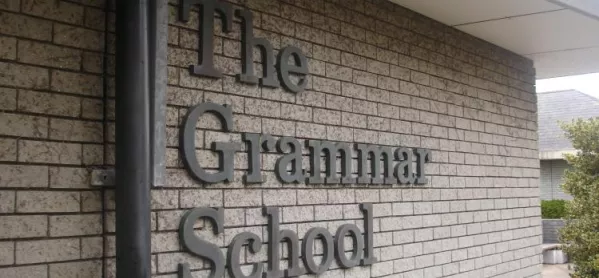The Conservative manifesto is a document of three Cs.
Firstly, change. Who would have thought we would one day see a Conservative manifesto which is so hostile to private schools, and in which universities are almost relegated to a side note - other than some equally discomfiting burdens to that of independent schools, and aggressive language on student migration - and where the much maligned FE sector assumes pride of place.
Secondly, continuity. There are some interesting threads of the past on the smaller stuff. A schools map for parent, primary schools having nurseries, a single teaching jobs portal, an emphasis on a knowledge rich curriculum, a bizarrely specific commitment on times-tables memorisation, and a watered down Ebacc target are all things that were either in the 2015 manifesto or which have been hawked around by the Cameron Department for Education and No 10.
But don’t be fooled by the rocks that they got. These are nothing compared to the elephant in the corner of the manifesto room, trumpeting a return to selection. And here’s the third C: condescension.
The grammar consultation opened last September. By January, tens, if not hundreds, of thousands of responses would have been received. The vast majority would have been politely or impolitely sceptical. But we also know, from a very convenient leak of the Grammar School Heads Association minutes, that this didn’t sway No10. They had - and have - a very clear view on both the rationale for new selection, and indeed how selective they want it to be. The minutes talk about schools aimed at around the top 10 per cent of the cohort - in other words, presumably about 300 grammar schools.
At that time, No 10 had some difficulties. Setting aside the sector opposition - which they were - the DfE was, at best, lukewarm about this. And the Parliamentary maths was difficult, both in the Commons and the Lords. So for that reason - as well as the convenient fiction that governments don’t pronounce in detail before their consultation has finished - the exact details of the proposals were kept light.
But now? None of this applies. The Tories are about to walk home with a three figure-majority. No 10 could, if they wanted, do an immediate post-election reshuffle and move education secretary Justine Greening out in favour of an unashamed grammar advocate. And the manifesto commitment means that the Lords are compelled to give way on legislation.
But the manifesto still has no detail. The entire commitment is: “We will lift the ban on the establishment of selective schools, subject to conditions such as allowing pupils to join at other ages as well as 11.” This idea isn’t even new - it was in the original consultation last autumn.
Why isn’t there more? Any sense as to these commitments, or of scale? Why isn’t there a proposal as to whether existing schools can convert, or if it will be just new schools, or whether there will be any limit in an area? Why, in short, is there nothing to help inform voters making choices?
The answer is that the party thinks there’s no need. Why open a flank for attack by Labour? Keep your head down, keep talking about a coalition of chaos, keep being strong and stable, and don’t worry about distractions like ideas and proposals.
Just marvel at the arrogance. The condescension. The sheer disdain with which this approach treats parents and teachers. Everyone - supporters and opponents of selection alike - deserves at least an outline of a plan for what the Conservatives would do in exchange for that most precious of gifts, a freely cast vote. That the party thinks they can make one of the biggest changes to school structures in 20 years without even bothering to set out their plans in a manifesto is a disgrace.
The secret adviser works in Westminster, having spent several years working in education on both the political and non-political side, in charities and on campaigns, and has worked with ministers of all political parties
Want to keep up with the latest education news and opinion? Follow Tes on Twitter and like Tes on Facebook

